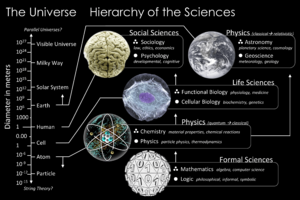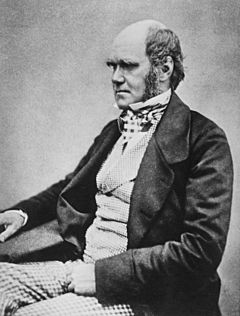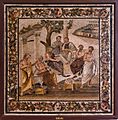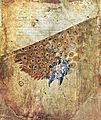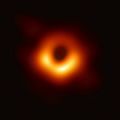Science facts for kids

Science is a way we learn about the natural world around us. It helps us understand how everything works, from tiny atoms to giant galaxies. Natural sciences include subjects like physics, chemistry, biology, geology, and astronomy. Science also uses mathematics and logic, which are sometimes called "formal sciences."
Scientists learn by making careful observations and doing experiments. This process helps them discover facts, create scientific laws, and develop theories. The word 'science' also refers to all the amazing knowledge we have gained using this method.
Research in science often uses a special approach called the scientific method. Scientists start with ideas or questions, known as hypotheses. They then test these hypotheses by doing experiments.
People who study and research science are called scientists. Scientists learn about things by looking at them very closely, by measuring them, and by doing experiments and tests. They try to explain why things happen the way they do and predict what will happen next.
Contents
How Scientists Learn: The Scientific Method

Today, "science" is mostly about how we gain knowledge, not just the knowledge itself. It focuses on understanding the natural world. In the 17th and 18th centuries, scientists began to describe nature using "laws of nature," like Newton's laws of motion. By the 19th century, "science" became strongly linked to the scientific method itself. This method is used to study everything from physics and chemistry to geology and biology.
The word scientist was first used by William Whewell in the 19th century. He used it to describe people who studied nature, to set them apart from those who sought other kinds of knowledge.
The scientific method is a set of steps scientists use to find answers:
- Scientists first find a question or problem about nature. This could be simple, like "How many legs does a fly have?" or very complex, like "Why do objects fall to the ground?"
- Next, they investigate the problem. They work to gather facts. Sometimes, this just means looking very carefully.
- For questions that can't be answered directly, scientists suggest ideas, called hypotheses. They then test these ideas by doing experiments and collecting data.
- Eventually, they figure out what they believe is a good answer. Then, they share their findings with others.
- Later, other scientists might agree or disagree. They might suggest different answers or do more experiments. Anything in science can be changed if new information shows the old answer wasn't good enough.
A Famous Example of Science in Action
A great example of the scientific method was an expedition led by Arthur Eddington in 1919. He traveled to Principe Island in Africa.
His goal was to record the positions of stars near the Sun during a solar eclipse. His observations showed that the stars' apparent positions close to the Sun had shifted. This meant that light passing the Sun was bent by gravity. This confirmed predictions made by Albert Einstein in his general theory of relativity, published in 1915.
Eddington's observations were the first strong proof for Einstein's theory. If the observations had been different, it would have shown Einstein's theory was wrong.
How Science Changes Our Lives
Discoveries in basic science can change the world. Here are some examples:
| Scientific Research | Impact on Our Lives |
|---|---|
| Static electricity and magnetism (1600s) Electric current (18th century) |
Led to all electric devices, power stations, modern electronics, including electric lighting, television, electric heating, magnetic tape, loudspeaker, plus the compass and lightning rod. |
| Diffraction (1665) | Important for Optics, which led to fiber optic cables (1840s), used for cable TV and the internet. |
| Germ theory (1700s) | Improved Hygiene, reducing the spread of diseases. Also led to antibodies for disease diagnosis and cancer treatments. |
| Vaccination (1798) | Helped eliminate most infectious diseases in developed countries and completely wiped out smallpox worldwide. |
| Photovoltaics (1839) | Led to Solar cells (1883), which power solar power, solar watches, calculators, and other devices. |
| The strange orbit of Mercury (1859) and other research leading to special relativity (1905) and general relativity (1916) |
Made satellite technology possible, like GPS (1973), satnav, and communications satellites. |
| Radio waves (1887) | Quickly became known for broadcast radio (1906) and television (1927). Also used in telephony, emergency services, radar (for navigation and weather forecasting), medicine, astronomy, wireless communications, and networking. Radio research also led to microwaves for heating food. |
| Radioactivity (1896) and antimatter (1932) | Used in Cancer treatment (1896), Radiometric dating (1905), nuclear reactors (1942) and weapons (1945), PET scans (1961), and medical research (using isotopic labelling). |
| X-rays (1896) | Used for Medical imaging, including computer tomography. |
| Crystallography and quantum mechanics (1900) | Led to Semiconductor devices (1906), which are essential for modern computing and telecommunications, including mobile phones. |
| Plastics (1907) | Starting with bakelite, many types of artificial polymers are now used in countless ways in industry and daily life. |
| Antibiotics (1880s, 1928) | Medicines like Salvarsan, Penicillin, and doxycycline that fight infections. |
| Nuclear magnetic resonance (1930s) | Used in Nuclear magnetic resonance spectroscopy (1946), magnetic resonance imaging (1971), and functional magnetic resonance imaging (1990s) for medical and scientific analysis. |
Important Aspects of Science
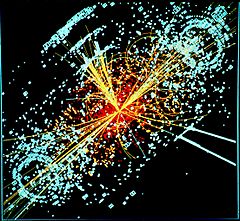
Not everyone fully agrees on exactly how science works. Some philosophers and scientists believe that scientific theories are only accepted for a certain time. They are used as long as they are the best explanation we have. When new information comes along that a theory can't explain, it might be changed or replaced. Sometimes, scientists will try to improve a theory instead of discarding it.
Science is a way to gain knowledge by constantly checking and removing ideas that are not true.
Scientists must be very careful to make sure their explanations fit well with what they observe and measure. They often compete to find better explanations. An explanation might sound interesting or pleasing, but if it doesn't agree with what other scientists actually see and measure, they will look for a better one.
Before a scientific article is published, other scientists read it carefully. They decide if the explanations make sense based on the data. This process is called peer review. After articles are published, other scientists will also try to repeat the experiments or observations to see if they get the same results. Peer review and repeating experiments are key to making sure scientific knowledge is correct.
Science helps us create models of nature, models of our universe, and medicine. There are many different types of science, each with its own name. However, it's important to remember that "science says" is not always the right way to put it. Science is a continuous process of discovery, not just a collection of facts and rules that are set in stone.
Different Kinds of Science
- Natural sciences
Related pages
Images for kids
-
The Chronology of the universe as understood by the Big Bang theory, a result of scientific knowledge.
-
The Plimpton 322 tablet from Babylonia records Pythagorean triples, written around 1800 BCE.
-
The first page of Vienna Dioscurides shows a peacock, made in the 6th century.
-
A drawing of the heliocentric model, where planets orbit the Sun, from Copernicus's De revolutionibus orbium coelestium.
-
Title page of the 1687 first edition of Philosophiæ Naturalis Principia Mathematica by Isaac Newton.
-
A radio light image of the M87* black hole, created by the Event Horizon Telescope in 2019.
-
A steam turbine with its case open; these turbines produce most of the world's electricity.
-
Cover of the first issue of Nature, published on November 4, 1869.
-
A dinosaur exhibit at the Houston Museum of Natural Science.
See also
 In Spanish: Ciencia para niños
In Spanish: Ciencia para niños


